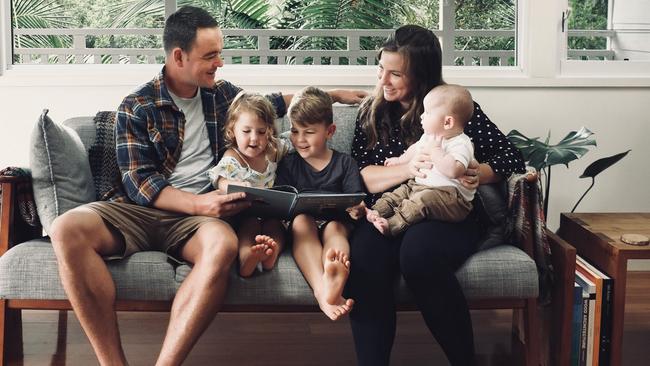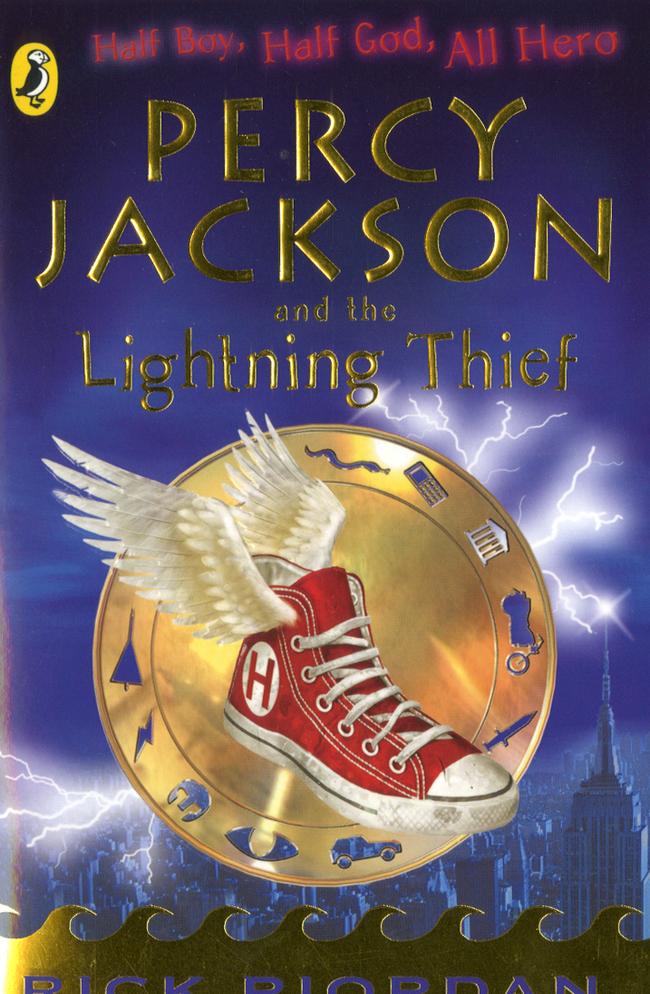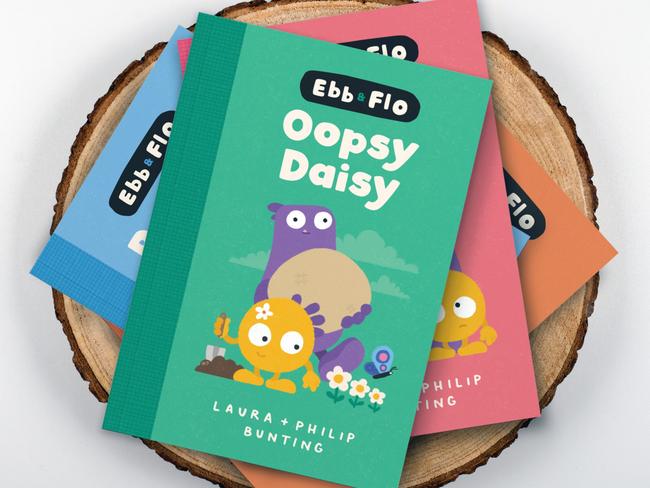10 ways to turn your child into a devoted bookworm
Building a bookworm isn’t a finite process. Even with the best start, it takes ongoing work, effort and thought to keep our kids interested in books – especially in the era of devices.

Amid a terrifying tsunami of information about nappy rash and poo-charts, the early childhood nurse said something we new mums were not expecting in our first ever mother’s group: “Read to your babies. Start now. It’s never too early. Read to them often and don’t stop. They will learn to love books and you will be giving them a lifelong gift.”
Hang on a second, I thought. My floppy little bundle can’t even hold up his own head let alone appreciate the grand finale to The Very Hungry Caterpillar … and you want me to read to him … already?
I remember thinking it was irrationally optimistic on the nurse’s behalf, yet I went home that day and I did. At first to fill the lonnnnnnnnnng days with a newborn. And then, simply because my son loved our book time, and so did my husband and I. Trips to the library soon became a highlight of our days, and I would come home with one of those enormous blue IKEA bags full of books every time. I felt like Budget Santa, presenting my huge sackful of free books to my son’s delighted squeals.
What followed were evenings of cuddly contentment as we slowly made our way through the pile, lost in epic 30-page tales of treehouse-building bugs, devious rabbits and whale-saving snails. It’s a constant reminder to me that those books brought him as much joy as any toy we’ve ever paid for. Because it wasn’t just the books, the words, the pictures he delighted in … it was us. Along with the stories in that blue bag was our attention, and our time. And isn’t that what every child craves the most?

Before long I had a two-year-old boy who would sit patiently and happily in the waiting room of a doctor’s surgery while I read him book after book, often garnering the curiosity of other mums who would come over and furtively ask what the secret was to getting a boy (a toddler boy no less) to actually sit still through all these books.
I would recount the nurse’s advice and pat myself on the back for having done my job. I had created a bookworm! Of course, as any parent knows, smugness is the quickest route to a swift and unforgiving downfall.
Cut to Year 4 and that same boy had yet to pick up a chapter book and read it from start to finish, of his own accord. He was a proficient reader. He enjoyed reading fact snippets from his favourite non-fiction books and would happily listen to as many books as I would read to him, but he hadn’t discovered his Hook Book, the one that made him want to sit down and put in the effort to read it chapter by chapter from start to finish all on his own. We tried everything from Harry Potter to the Treehouse books. Nothing grabbed him. I thought perhaps he would just never be interested in fiction and almost gave up trying.
Then his interest turned to Greek mythology in a big way, and after dipping in and out of every non-fiction book on the subject I suggested we try Percy Jackson (a series that weaves Greek mythology into an action-packed story in a modern setting). I started by reading it to him, and then one night, we reached an epic cliffhanger and he begged me to read on. In truth, I wanted to keep reading as well, but I had spotted the spark in his eye, his stillness as we approached the dramatic chapter ending. He was invested in the story. As hard as it was, I said no. He looked crestfallen and slightly panicked. He needed to know what happened next and asked if he could keep reading on his own. “Sure. If you like,” I said as casually as I could. And that was it. Hook line and sinker. He read 22 Rick Riordan novels over the next year or so and hasn’t stopped reading fiction for joy ever since.

This has convinced me that when we match the right book with the right child at the right time, that’s when magic happens. It has also convinced me that building a bookworm isn’t a finite process. Even with the best start, it takes ongoing work, effort and thought to keep our kids interested in books. Of course, now more than ever because #devicesarereallyfunandrequirefarlessefforthanreading.
Despite having two authors as parents and a household that is the embodiment of Dr Seuss’s famous quote: “Fill your house with stacks of books, in all the crannies and all the nooks”, all three of our kids have needed active encouragement at varying times to hook them on books, sometimes when we least expected it.
The biggest blip in our shared reading enjoyment with all three children hit at the worst possible time: just as they were learning to read. We had all been looking forward to this stage. But what followed came as something of a shock to us all. Suddenly we were pulled from the Magical Land of Picture Books, full of magnificent art and rich storytelling, and dropped into functional-but-not-nearly-as-much-fun Home Reader Land. We watched each of our kids struggle gallantly to decode the words on the page, only to reach the end of a book that left us all feeling … bored, uninspired, just meh.
Meh is not a word that should be used about the books they read at this stage. This is precisely when kids are deciding whether all this hard work involved in learning to read is worth it. They should be rewarded heartily for their efforts. But in my experience, the carrots being dangled in front of some children are too often soggy and brown.
Each week, despite knowing how important they were, those home readers were often left in the corner until we couldn’t avoid them any longer. We quickly realised just how hard we were going to have to work to make sure our kids remained excited about reading through this process.
Let me be clear, home readers serve a hugely important purpose. They are designed to step children through the reading process, in a very specific way. Their goal is not artful storytelling, but teaching the relevant sounds in a specific order. But what they make up in function they lack in fun.
There have been improvements in newer readers, but lots of schools do not have the budgets to regularly update their rotational pile. Our kids attended a well-performing, good-sized state school in a regional area, and I cannot recall a time that we finished a home reader thinking, ‘Wow! That was fantastic/exciting/fun/funny!’ I mean, how will I ever forget the wildly relevant ride that was the 16-page all-you-need-to-know about fax machines? Or the 30-page non-fiction page-turner simply titled Rice?
My sister, who worked for many years as a teacher-librarian likens home readers to training wheels — boring, but they eventually take you to a more exciting place. The issue is, kids must know these exciting places exist. For lots of kids, these home readers are the main (and sometimes only) books they’ll be exposed to. And with school libraries shrinking and teacher-librarians now at critically low levels in schools across Australia, it is yet another missed opportunity for a child who might be flagging in their enjoyment to be expertly guided towards books that keep the joy alive.
During this learn-to-read journey with our own kids, we looked for other books to supplement the home readers but we struggled to find enough that not only suited their developmental stage of reading (featuring decodable words, sight words, high-frequency words and so on), but that were also fun and engaging. That’s why we wrote our Ebb & Flo early reader series. We wanted to create books to complement the home readers, ones that really rewarded kids for the Herculean effort they were putting in to make sense of these strange symbols and sometimes frustratingly irregular rules of reading (think of how you read tomb vs bomb for a quick reminder of how irritating the English language can be).

Almost all children master the technical skill of reading eventually. But too many end up reading purely out of obligation rather than enjoyment, and it’s not good enough. A growing body of evidence suggests reading for pleasure has the greatest impact on academic achievement (rather than simply reading what is required in class).
Australia’s literacy rates have dropped concerningly and there is no simple solution, but one thing we can all do is work harder. As creators, we have to work harder to produce the most exceptional books we can, and as parents we have to work harder to place the best possible books we can find into our budding readers’ hands. It takes time. And it takes effort. That’s how we give every kid the chance to blossom into a bookworm. And what a gift that is.
Here are some tips:
Grab a bag
A big one. Take it to your local library and let your child fill it with books of their choice. Watch their little face light up when they heft that enormous bag to the car. Next time, do the same, but this time, go on your own, and you select the books. Leave the big pile at home for your child to discover.
Save your opinions (for now)
Avoid judging your child’s book choices, especially early on. As long as the book is appropriate, it’s okay. The first goal is for reading to be enjoyable. It’s much easier to broaden their book choices later, once they’re hooked.
Don’t expect it to happen on its own
It takes continual hard work — yes, your hard work — to make it happen. Search for books that match their interests and when you have a playdate, ask your child’s friends what they are reading. If you don’t know where to start, one of the very best resources is the Your Kid’s Next Read Facebook group run by Megan Daley, Allison Rushby and Allison Tate. It is literally where parents say: “My kid is X years old and loves XYZ … anyone know of a book that might suit?” The community is active, passionate, positive and super helpful.
Location location
Encourage them to bring a book to the beach. Move the teepee from the playroom into the garden and fill it with rugs and cushions and books. Hang a hammock in a shady spot in the garden. Run a bubble bath. Let them read under the covers with a torch. Build a den or rocket out of cardboard and hang some fairy lights inside. It can be as simple or elaborate as you want.
Model it
Don’t expect your kids to think it’s a great idea to spend their downtime sitting and reading a book if they never see you choosing to read one.
Use your ears
Next time you are in the car, put on an audiobook instead of music for a change. Audiobooks have transformed many reluctant readers into avid ones.
Keep reading aloud
Read aloud to your child well beyond the point when they can read for themselves. Why? Because reading aloud to our kids allows them to digest books with content they may struggle with on their own. Even though the original baby bookworm from my story is about to turn 12, we still read aloud to him every night (as a supplement to books he reads himself). Currently we are reading a book called The Disappearing Spoon about the history of the periodic table, since he is now fascinated in chemistry. There’s a lot of historical and political stuff that he wouldn’t understand if I weren’t explaining as we went, but he’s loving it. Plus, I still get to snuggle up with my 12-year-old, and I don’t think I need to explain why that’s so great.
Add fun to the functional
During the learn-to-read phase, encourage them, with as much enthusiasm as you can, to read those home readers. But supplement these books with the most fun and engaging reads. Show them the adventures that they can look forward to once their training wheels are off.
Fact or fiction
Some kids are more naturally drawn to non-fiction books. These can be great entry points. For example, our son’s transition to the Percy Jackson books from Greek mythology.
Reluctant vs struggling reader
There is a big difference between a reluctant reader (ie they’d rather be kicking a football than reading a book) and a child who is struggling to read (ie there is a medical issue affecting their ability to read). There are lots of things that can affect our ability to read — from dyslexia to vision issues, slow processing speed to ADHD. If you are worried about your child’s progress, speak with your teacher or make an appointment to consult a specialist.

About the author
Laura Bunting is a children’s book author, with more than 20 picture books and early junior fiction titles published locally and internationally. She collaborates on many of her books with her author/illustrator husband Philip Bunting. Their new early reader series titled Ebb & Flo has just been published by Hardie Grant.




To join the conversation, please log in. Don't have an account? Register
Join the conversation, you are commenting as Logout